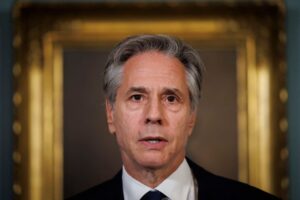This tantalizing symmetry in Warren Buffett’s stock moves may be a clue on his Apple stake
“If Buffett likes round numbers, he may not be planning to sell additional shares of Apple.”


A striking detail in Berkshire Hathaway’s stock portfolio has caught the attention of Wall Street as investors look for clues on what CEO Warren Buffett could do next.
“Berkshire owned exactly 400,000,000 shares of Apple and 400,000,000 shares of Coca-Cola as of June 30, 2024,” David Kass, a finance professor at the University of Maryland’s Robert H. Smith School of Business, tweeted on Wednesday. “If Buffett likes round numbers, he may not be planning to sell additional shares of Apple.”
In an email to Fortune, Kass acknowledged that the numbers by may just be a coincidence but said he believes that Buffett is signaling he’s done selling and “plans to hold his Apple shares indefinitely,” similar to his Coca-Cola stock.
“Since Buffett has said that the CEO is the chief risk officer, I believe Buffett has been acting in a prudent fashion by reducing Apple’s portfolio weight from 50% down to 30%,” he added, noting that Berkshire’s initial Apple investment of about $30 billion had appreciated to around $180 billion.
Buffett followers—and investors overall—have been puzzling over his possible intentions after the conglomerate revealed a nearly 50% cut in its Apple stake earlier this month. While analysts don’t think he will completely unload the rest of his Apple shares, the dramatic cut in the second quarter raised questions about further reductions.
Of course, while Berkshire now holds the same number of shares in Apple and Coca-Cola, the value of those stakes are wildly different. As of Friday’s closing prices, the Apple stake was worth $90.4 billion, while the Coke stake was worth $27.7 billion.
According to Kass, Apple accounted for almost 50% of Berkshire’s equity investments at the end of the second quarter, while Coca-Cola represented 9%.
But because Coca-Cola is Buffett’s oldest and longest stock position, which has remained steady for decades, the symmetry in his Apple shares has been too juicy to ignore, as CNBC and the Wall Street Journal also picked up on Kass’s tweet this past week.
In addition, Buffett is a hard-core fan of Coca-Cola, reportedly drinking five cans of Coke a day, while he is also an iPhone user and has praised Apple for how loyal its customers are.
Representatives for Berkshire Hathaway didn’t immediately respond to a request for comment.
Analysts viewed the Apple stock sale as a risk-management move, noting that it had grown to take up a massive chunk of the portfolio by valuation. In fact, it followed earlier moves to trim the portfolio. In May, Berkshire disclosed the sale of 100 million Apple shares, amounting to 13% of its stake at the time.
CFRA Research analyst Cathy Seifert told Fortune last week that the latest Apple stock sale represents a “classic rebalancing of the portfolio.”
With Berkshire’s portfolio skewed so heavily toward a handful of stocks like Apple, there was the risk of too much concentration, she explained. Some profit-taking also could have been involved, as the sales occurred when the broader stock market was notching record high after record high.
The stock dump helped boost Berkshire’s cash pile to a fresh high of $277 billion by the end of the second quarter, and Kass pointed out on X that it almost equals its $285 billion investments in equities overall.
But despite his latest moves, Buffett is still considered more of a buy-and-hold investor and hasn’t done that much reshuffling compared to his peers.
“Over the past decade, Berkshire’s average portfolio turnover rate has been quite low, often ranging between 5% to 10% per year,” Kass tweeted. “The average turnover rate for large-capitalization managed equity funds over the past 10 years typically ranges from 30% to 60% per year.”






